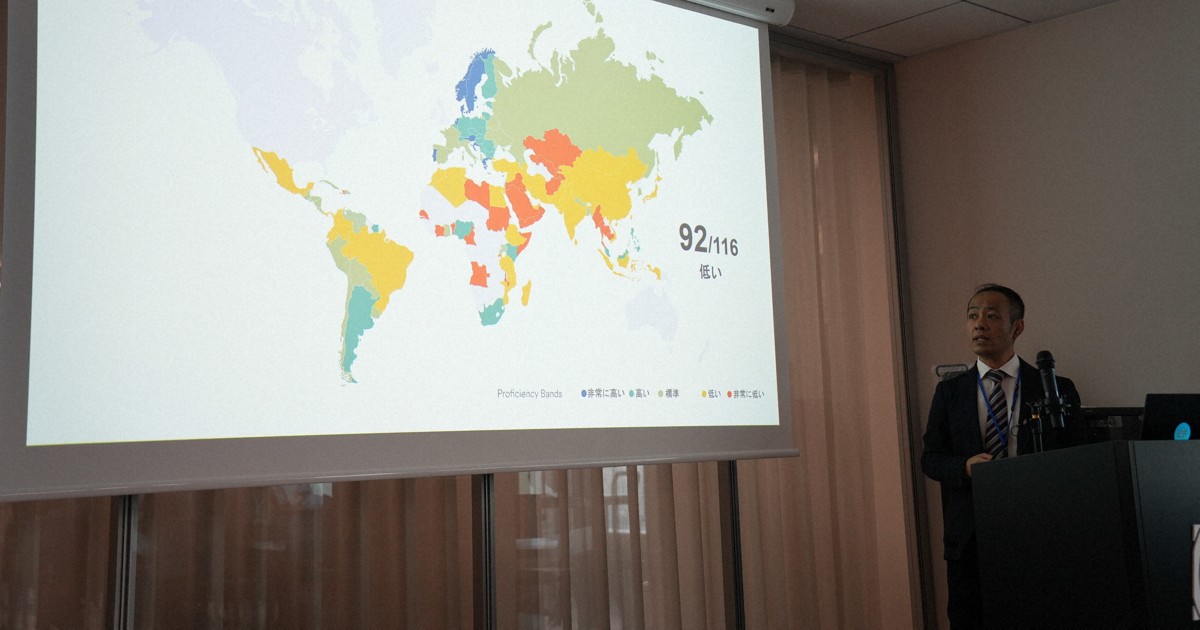Summary
Japan’s English proficiency ranking dropped to 92nd out of 116 countries, the lowest ever recorded.
The decline is attributed to stagnant English proficiency among young people, particularly due to the COVID-19 pandemic.
The Netherlands ranked first, followed by European countries, while the Philippines and Malaysia ranked 22nd and 26th, respectively.



You are correct (for standard Japanese 標準語 hyoujungo; other dialects can be quite different). NoneOfUrBusiness’s response is not a great take. Every word has an accented syllable or no accent at all (and it really is based on syllables, not mora). The accent is realized as a relatively sudden drop in pitch after the accented syllable with no (necessary) change in length or loudness. The drop can complete within the next syllable or after. Usually at the beginning of an utterance you start low, climb up in pitch to a certain point, and then either hit an accent and drop suddenly or gradually drop across a longer period of time if there’s no accent.
The precise pitch does not matter, and it’s definitely possible to have two accents close together resulting in a high-mid-low kind of pitch pattern.
Things are also complicated by the fact that Japanese likes devoicing certain syllables. Devoiced syllables can still be accented even though they can’t carry pitch in the same way as voiced syllables.
It’s not though? Pitch can and does change (either rise or drop) mid-syllable no?
Pitch does, but accent placement counts mora but only assigns to syllables. For example, if an accent pattern will put an accent mid-syllable, the accent will move further back to the beginning of the syllable. This is also why accents only occur on the first mora of a long vowel. You can also see this in action in accent placement for compound nouns.
Another good thing to know is that adjacent vowels within the same morpheme (typically one kanji) are part of the same syllable. So 帰る is an accented verb, so the accent goes one mora back from the end like with all accented verbs. But this would put the accent on the え in かえる, and かえ is one syllable here, so in fact the か gets the accent.
Edit: I was looking over my main source[*] for this, and was reminded of one really good example of the role of syllables in accent assignment: genitive の. Nouns can lose their accent if followed by の, and when this occurs is exactly when (1) the noun is at least bisyllabic, and (2) the noun’s accent is on the final syllable. Thus monosyllabic 本 (ほ\ん) stays accented ほ\んの, but bisyllabic 日本 (にほ\ん) becomes unaccented にほんの, and 男 (おとこ\) becomes unaccented おとこの.
[*] The Handbook of Japanese Linguistics (1999), edited by Natsuko Tsujimura, published by Blackwell Publishers, Ltd.
TIL. I apparently picked it up naturally but I feel for people who have to actually learn this.
Uhhh… ok dude. I really doubt anyone “has to” learn this, as long as they learn to hear pitch accent I’m sure anyone can pick it up “naturally”. I spend my time learning this sort of stuff because it’s cool and interesting.